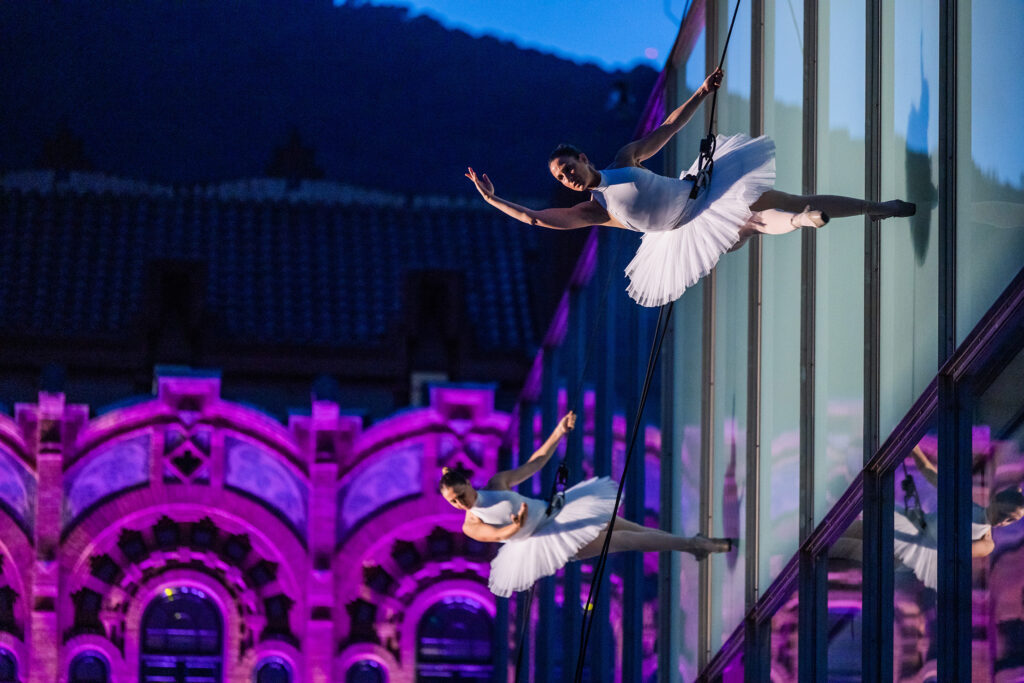From dancing on the walls to dismantling them: A philanthropic landscape I’d like to see

It takes a certain type of person to scale a wall and dance on it almost upside down. Other than the two ballerinas doing just that on the final night of the Philea Forum 2022, I reckon there were 800 other people at the event who also daily dance on their own kinds of walls (read: barriers to making the most impact). These walls create tension and friction because they challenge traditional ways of doing things and highlight the gap between where we are now and where we need to be.
The walls might be around history – the paths of extraction and exploitation that got us here created the problems we are fighting now to solve; inequality – the concentration and protection of wealth; social divides and unrest – deep scepticism towards any form of power amongst the communities that foundations are in service to; politics – working under regimes that are at best, uncertain, and at worst, dangerously threatening a peaceful democracy; legacy – the pressure to do things as they’ve always been done; imagination and skills – the difficulty of working towards a future we haven’t yet seen and don’t know how to make happen.
These walls threaten the legitimacy of even the greatest of visions, so the Philea Forum was a great space to come together, as a European philanthropy community, and better understand which walls we were facing and effective ways to respond.
For instance, during the Forum we discussed the climate breakdown, and the need to shift from crisis response to ongoing risk management, and the need to build resilience across society whilst also shifting public discourse towards health and hope. There was the launch of the #PhilanthropyForClimate movement, which tackles the stark lack of collaboration and flow of capital towards climate issues.
There were also sessions focussing on the “how” of philanthropy: on participatory grantmaking and power dynamics in funding; on employing an intersectional lens in programme design and evaluation; on using arts-based approaches in civic engagement and community building.
But these sessions can feel like merely dancing on the walls. What will it take for funders to start dismantling the walls instead? And what would it look like for funders to truly face the barriers they come up against and change course?
As I’ve seen it, the philanthropic landscape in Europe – which is not unlike North America at this historical moment – sits on a watery spectrum of safe bets, keeping a broken system afloat: there are relatively few spend-down funders, divesting foundations, and reparations; few foundations giving away equity and shares, or moving vast amounts of money anonymously, quickly and quietly; still far too few “systemic” funders working on portfolio approaches, movement building and narrative shifting together with citizen and environmental groups, social innovation organisations and media; still few foundations taking advantage of their position of low risk and accountability by funding and programming truly experimental, arts-based or social innovation-based initiatives to build a new language, critical awareness and deeper relationships; not to mention the palpable lack of any disagreement in philanthropy forums which, as Antti Arjava suggests, is cause for concern in terms of the diversity that philanthropy is positioned precisely to represent.
It is rare to create spaces that balance content and connection so beautifully, and the Philea team did such a great job of hosting a rich and insightful gathering, but I’d like to have met more “unusual suspects” in philanthropy; platformed and celebrated the work of community foundations; sat in solidarity with individuals whose own lives might be on the line as a result of the work they do; spoken to philanthropists who don’t go by that name and wealth owners who don’t yet have foundations; and heard from board members pushing for these kinds of changes.
The philanthropic landscape I’d like to see includes far more foundations lobbying in support of unions, tax and wage changes; foundations holding their own companies to account for destroying the planet and changing too slowly; and more foundations declaring a climate emergency and hosting town halls and citizen assemblies, in line with the demands of social movements like XR to tell the truth, act now and be the change.
Of course, there are many funders who “dismantle the walls” in many of these ways, and more, already. Indeed, we’ve worked with many of them over the years at the Social Innovation Exchange (if you don’t know us yet, let’s talk).
But it’s also true what Anna Hirsch-Holland said in a recent Alliance write-up, that innovation inside foundations is “held back by organizational cultures and institutional systems and processes that struggle to break free from a business-as-usual approach”. Robin Heller is right to imagine what “it took to build enough core strength and confidence to dance gracefully on the side of a building in front of an audience of 800 people.”
The thing about scaling walls and dancing on them is that it requires a temporary suspension of disbelief, i.e. we have to, for a moment, believe that it is possible to do the impossible. And I won’t deny that this is important, but the different and hard work of dismantling walls is in finding the strength, confidence and grace to make it so.
Authors

